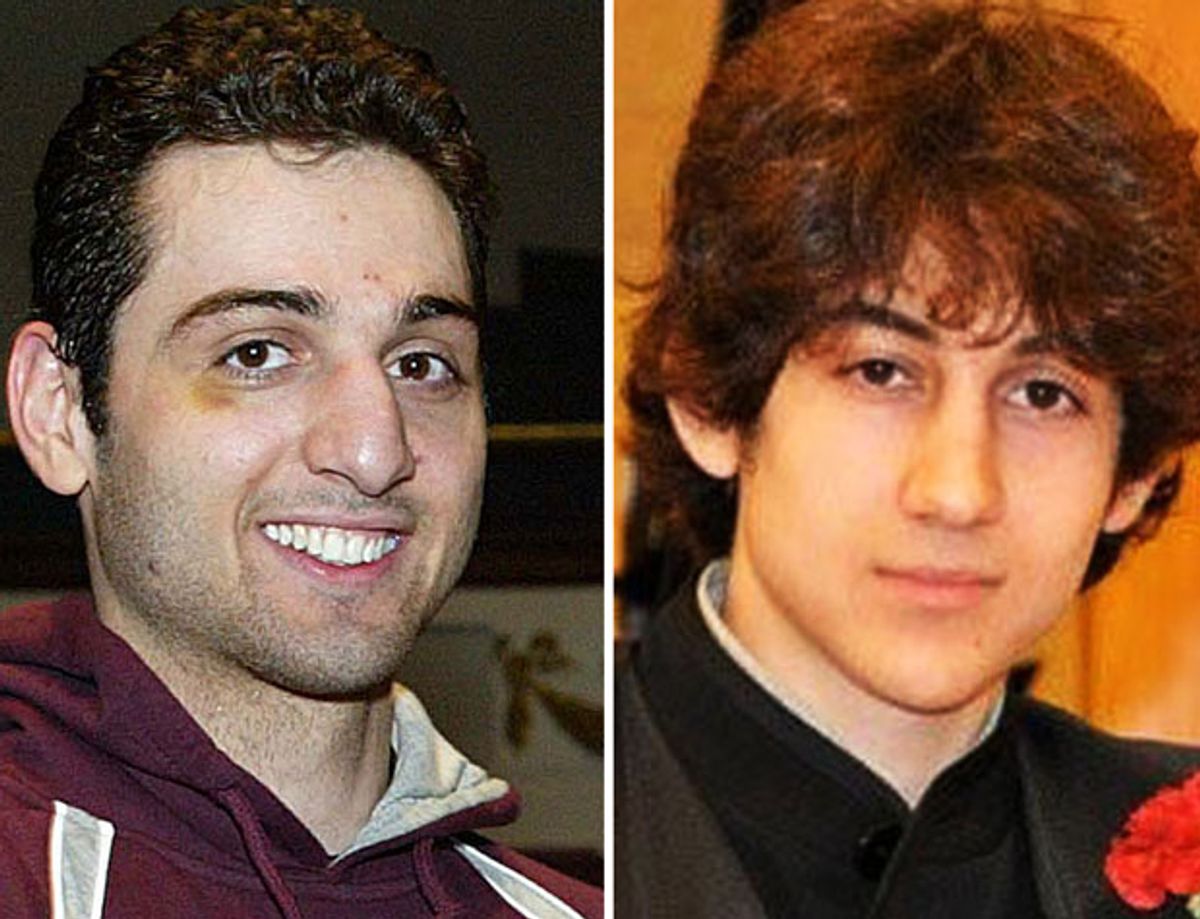Recent comments by the Boston Police Department to the Washington Post confirm what Tech Talk said last week: Facial recognition was not a factor in the hunt for the Boston Marathon bombers. According to the Post, “facial-recognition software did not identify the men in the ball caps. The technology came up empty even though both Tsarnaevs’ images exist in official databases: Dzhokhar had a Massachusetts driver’s license; the brothers had legally immigrated; and Tamerlan had been the subject of some FBI investigation.” Image analysis software has not caught up with the grimy reality of street photography: low-resolution, long-range images—often poorly focused, rapidly moving, and caught from odd angles.
But if analytical cameras were not a factor last week, they may be soon.
The system can spot cars on its watch list the moment they enter the city, and trail them by camera throughout their trip. The system also uses medium-time-scale scene analysis to spot and report changes in the relatively static features of a video image—a backpack left by a railing on a busy street, for example—while ignoring rapidly changing components like people and vehicles passing by. It’s like those spooky, ultra-long-exposure pinhole camera photos that turn a busy street into an empty post-apocalyptic dreamscape, unpopulated under the noonday sun. You can see demonstrations of the Domain Awareness System in action in this Today Show segment. (The technique has broad application to cluttered environments. See the LandTrendr analysis that researchers from Oregon State University and the U.S. Department of Agriculture used to transform Landsat satellite images of the Pacific Northwest into a pristine, cloud-free, season-by-season time series yielding a clear picture of bark beetle damage creeping across the region over 23 years.)
Why is the NYPD going public with a description of its high-tech crime-fighting tools? New York Police Commissioner Ray Kelly says that knowing the odds against them will deter potential terrorists. We should also note that the NYPD and Microsoft have recently agreed to market the system, and New York stands to receive 30 percent of the gross revenues on the multi-million-dollar licenses.
Crowdsourcing or Mob Rule?
Meanwhile, the public use of crime imagery is proving a double-edged sword. In another article, the Post reports that law enforcement requests for public assistance unleashed a wave of feverish amateur sleuthing—on Twitter, Reddit, and 4Chan, among myriad other channels. This touched off a frenzy of theories and (mis)identifications. Some self-appointed detectives publicly fingered innocent people as probable Marathon bombers, subjecting them to threats and possible violence. “In addition to being almost universally wrong, the theories developed via social media complicated the official investigation,” the Post reported.
The need to halt the rumors seems to have been a factor in the FBI’s decision to release photos of the then-unidentified men in the black and white hats on Thursday afternoon. That release spurred thousands of tips—including a call from the Tsarnaevs’ aunt, identifying her nephews. (Until Dzhokhar Tsarnaev makes a statement, it’s impossible to tell whether the pictures' release contributed to the state of mind that prompted the brothers to shoot MIT policeman Sean Collier and make a run for it that culminated in the shootouts and arrest in Watertown.)
It’s easy to deride the tsunami of uninformed yet absolute opinion that washed over the country last week. In fact, it’s necessary to deride it. But I’ve covered crimes in the days before the Web, and the only thing about the process that’s changed is how much of it is visible. For reporters and police alike, any story like this begins in a welter of speculation and misinformation. Back in the epoch of twice-a-day deadlines, there was time for most of the crap to die a natural death before the presses rolled. Today, the rumor mill is powered by gas turbines rather than water wheels, and we’re all on the scene, all reporters, and we can't take time to delegate news judgment to others.
Photo: NYPD Commissioner Ray Kelly, NY Mayor Michael Bloomberg, and Microsoft VP Mike McDuffie announce Domain Awareness System / Microsoft
Photo: The Lowell Sun & Robin Young/AP Photo
Douglas McCormick is a freelance science writer and recovering entrepreneur. He has been chief editor of Nature Biotechnology, Pharmaceutical Technology, and Biotechniques.




